All postage in Russia have been marked with special marks with the image of the national emblem since 1857. For several decades, these stamps were printed according to a single standard, virtually unchanged. However, since the 1920s, with the formation of the USSR, there was a custom to issue new stamps for certain political or social events. The most expensive of them have already acquired the status of a collectible antique in our time. Even simple photos of them became the subject of study of philatelists, and the price of the originals are sometimes measured in hundreds of thousands of dollars. We found out what are the most expensive stamps of the USSR, photos and prices are also attached.
The price of a postage stamp, like the price of many other antiques, is formed by several factors at once:
- rarity;
- rarity of the instance;
- limited edition.
In addition to these qualities, the value of the postage stamp is also determined by what it depicts and what historical or museum value they may carry.
91 years since Lenin’s birth, 52,000 rubles.

Not the most expensive example of a collector’s stamp. Since such examples in honor of the great leader’s birthday were issued annually and in fairly large batches, this made them not particularly valuable among collectors. Today a collector would have to shell out $850 to get such a stamp.
Be a hero! 65,000-130,000 rubles.

One of the many postage stamps that were issued in honor of the Patriotic War. It became in demand the circles of philatelists for its historical value. The circulation was printed, but not yet released, and on August 12, 1941 there was an attack by the German air force on the capital. On that day almost all materials of this circulation were destroyed (by accident). However, the surviving single copies became rare, and today collectors value them at $1000 and above.
Hand with a sword, cutting a chain, 815 000 rubles.
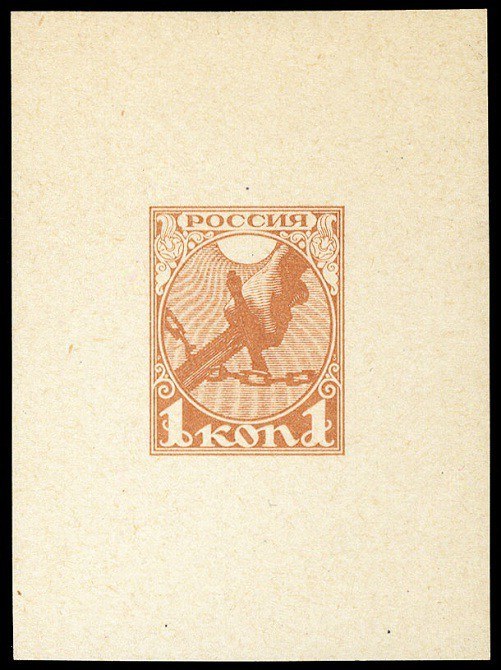
The postal symbol with the unusual title Hand with a sword, cutting a chain was produced in brown and blue. The prototype of the image was an engraving of the famous artist Richard Zarinsh. The postage stamp is distinguished by its rarity and beauty, as well as its unusual name, so in the circles of collectors it is valued at a sufficiently impressive sum.
Blue Gymnast, 900,000 rubles.

This stamp has its own history. It was created and replicated in honor of the 40th anniversary of the Soviet circus. However, after the printing, there was a dispute in the government about the date of the foundation of the circus in the USSR. Without reaching an agreement, it was decided not to put the stamp into circulation. However, in 1979 it was finally reissued, but for another anniversary — the 60th anniversary of the national circus. The first version of the stamp was sold for $13,800 at a major Cherrystone trade event.
Studying of Auroras, 945 000 rubles.

The postage stamp «Studying of polar lights» was dedicated to majestic international scientific event — «Geophysical year», which lasted from 07/01/1957 to 12/31/1958. Many countries that took part in this worldwide scientific research created state stamps to commemorate such an event. And the USSR also decided to pay tribute to tradition by issuing its own postage stamps.
Two copies of the Studying of Auroras were on sale for $14,500 nowadays.
250 years of the Historic Poltava Victory, 650 thousand — 1.3 million rubles.

The stamp, which was never issued, depicts the victory of the Russian Tsar Peter I over the Swedes. The Swedish field marshal and his defeated army stand, folded their flags in front of the Tsar, who sits on a horse. This rare copy in honor of the 250th anniversary of the victory was not issued for the reason that by the launch of circulation, the relations of the USSR with the once defeated country were diplomatic. Therefore, it was decided to destroy almost the entire batch of stamps.
Only 40 copies survived, each of which, according to various estimates, is worth between 10 and 20 thousand dollars. It is difficult to determine the exact price, as each holder purchased it for a different amount.
Three pearls, 650 thousand — 1.3 million rubles.
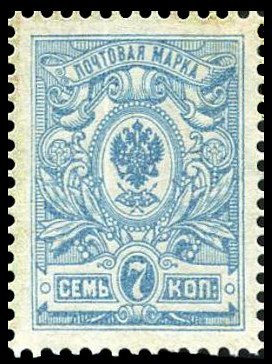
Stamp of the 17th circulation of 1908, created to replace the obsolete copies used since 1889. It received such a name only due to the three circles called pearls. It is remarkable that there were always four pearls on old-style stamps. In addition to the characteristic white circles, the stamp depicts the coat of arms of Imperial Russia.
Limonka, 650 thousand — 1.3 million rubles.
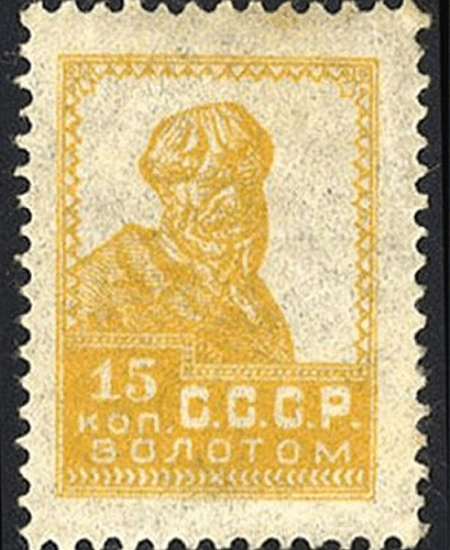
Only about 100 Limonka stamps now exist in unused form. This postage stamp belongs to the initial standard circulation of 1925, which was printed in limited quantities, because the machine failed during production. Therefore, the total turnover of Limonka was insignificant. The stamp got its name for its bright yellow color. Today philatelists are willing to pay between $10,000 and $20,000 for one copy of Limonka.
Flight of Peace and Friendship, 1.9 million rubles.

Another stamp that was never destined to be in wide use by Soviet citizens because of political upheavals. This one was printed to commemorate Nikita Khrushchev’s planned diplomatic «journey» to the Scandinavian countries. He was also supposed to visit Sweden during this journey and that is why the previously mentioned stamp «250 Years of the Historic Poltava Victory» was not issued in circulation.
The circulation of the correspondence Flight of Peace and Friendship was also printed, but not put into circulation. Public sources indicate that this happened for political reasons. There is speculation that it was due to the fact that Nikita Khrushchev retired almost immediately after his journey. It is not known by what means, but after a while this copy appeared in private collections.
Zakarpattia Ukraine, 1.94 million rubles.

Stamp which, like many of its predecessors, is dedicated to an important historical episode: the 20th anniversary of the union of Zakarpattia and Soviet Ukraine. The correspondence was printed in the USSR in 1965, but was not put into free circulation.
2nd International Polar Year, 2.4 million rubles.

The stamp was put into circulation in small numbers in 1932, as it was intended exclusively for airmail shipments in a limited area. The postage stamp was used for transportation from Arkhangelsk to the Arctic Circle and back. The denominations of 50 kopecks and 1 ruble were used, and half of the circulation was issued with an insignificant defect in perforation. The small defect was the reason for the high price per copy.
Slate-blue airship, 2.6 million rubles.
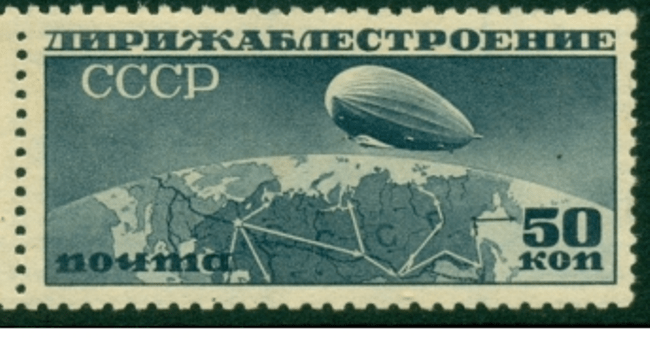
This stamp was replicated to honor the airship construction of the Soviet Union. The sketch depicts a large airship rising into space over the entire planet as a sign that the USSR occupied most of the globe. Initially, the entire batch was supposed to be printed in brown, however, due to an unknown error, 3,000 stamps were issued in slate-blue.
Only 24 stamps, which were printed in perforations without prongs, are now valued at $40,250.
Consular fifty, 4.1 million rubles.

The issue of this copy was timed to coincide with the organization of the Russian-German society «Deruluft», engaged in airmail communication between the USSR and Germany. The «Fifty» was created as a kind of stamps intended for transfer of paid international correspondence by air connection Moscow-Königsberg.
However, the Fifty was issued without the approval of the People’s Postal Committee and was withdrawn and destroyed almost immediately after issuance. Only 50-60 pieces of 50 kopecks were put into circulation in 1922. Only one of them survived to this day (no other originals have been found) and was sold at an auction for $63,250.
Airmail with a fat five, 5.6 million rubles.

As practice shows, the most valuable stamps (and not only) are those that stand out from the general mass by any defect. The airmail stamps were issued in 1923 in a limited edition of 1, 3, 5 and 10 roubles. The most outstanding in the series was a copy with a denomination of 5 rubles, because the first sheet in the batch was printed with a non-standard large five.
Levanevsky with Overprint, 34.2 million rubles.
A stamp depicting Soviet pilot Levanevsky was issued to commemorate the grandiose planned flight from Moscow to San Francisco over the North Pole. Although the flight was canceled due to an airplane engine malfunction, the stamps gained unprecedented value immediately due to 2 printing errors.
The first error was the word San Francisco with a small «f,» and the second was an upside-down overprint. According to some sources, the People’s Commissariat for Internal Affairs ordered to release several sheets of stamps with such mistakes, because it was a philatelist himself and understood what value they would represent.
Tiflis Unique, 45.6 million rubles.
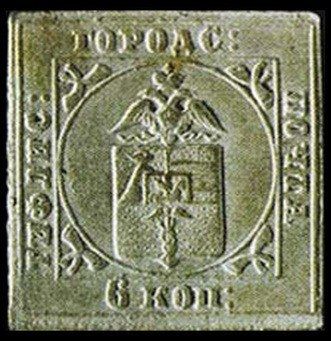
Another record holder in terms of value is the stamp called Tiflis Unique. This is one of the very first postal documents in the world, issued in 1857 in the city of Tiflis (now Tbilisi). Officially this postage stamp is considered to be the first Russian stamp. Such historical value and rarity made it possible to sell it in 2008 for 480,000 euros, which at the exchange rate at the time was approximately 700,000 dollars (45.6 million rubles), at the largest auction of philatelists «David Feldman».
To the best striker of the All-Union Philatelist Society, 50.6 million rubles.

The most expensive stamp of the Soviet Union was printed in 1932 and was timed with its issue to the first exhibition dedicated to the achievements of the domestic philately. In the circles of professionals it was given another name. «Cardboard» — this is the name of the most expensive stamp of the USSR times due to the unusually thick paper on which it was printed.
Only one copy has survived to this day (no other examples have been found), and it was presented at a Cherrystone auction in 2008, where it was bought for $776,000.
The most valuable postage stamps in the world
Not only rare Soviet stamps are distinguished by their value. The most expensive stamps in the world can cost up to 20 million dollars and compete in value with yachts, watches and diamond necklaces.
First stamps of Mauritius, $15 million (978 million rubles)

Not only rare Soviet stamps are distinguished by their value. The most expensive stamps in the world can cost up to 20 million dollars and compete in value with yachts, watches and diamond necklaces.
Holy Grail, $3.97 million (256 million rubles)

The world’s most expensive stamp depicts one of the founding fathers, Benjamin Franklin. Only 2 copies are known, one of which is in the public domain at the New York Library, and the other is kept in the private collection of an unknown connoisseur. Experts estimate one copy at least $3.97 million (256 million rubles).
Penny Black, $23,500 (1.5 million rubles).

Penny Black was the first standard stamp in history, and it began to be issued on 11 printing plates, with a total circulation of 68,808,000. The plates were counted as 1a, 1b, 2, 3, 4, and so on up to 10. Plate No. 11 was planned to be used printing the Red Penny, stamps of 1841. However, for unknown reasons, a number of Black Penny stamps were printed on plate No. 11. It is these stamps that are considered very rare and expensive today.
Interesting fact: British zoologist John Edward Gray bought several blocks containing 4 Black Penny stamps and kept them. Later he began to buy and keep other copies (although they were not rare or valuable at the time). Thus he became the world’s first philatelist, and in 1861 John Gray published the world’s first Catalogue of Postage Stamps.
Postage stamps cannot boast precious materials or the complexity of their production. Therefore, a common man can hardly ever understand why ordinary stamps with insignificant features are auctioned off at the price of yachts, precious stones and luxury estate. But for professional philatelists such copies are no less valuable than a rare painting by a famous artist for collectors of works of fine art.
